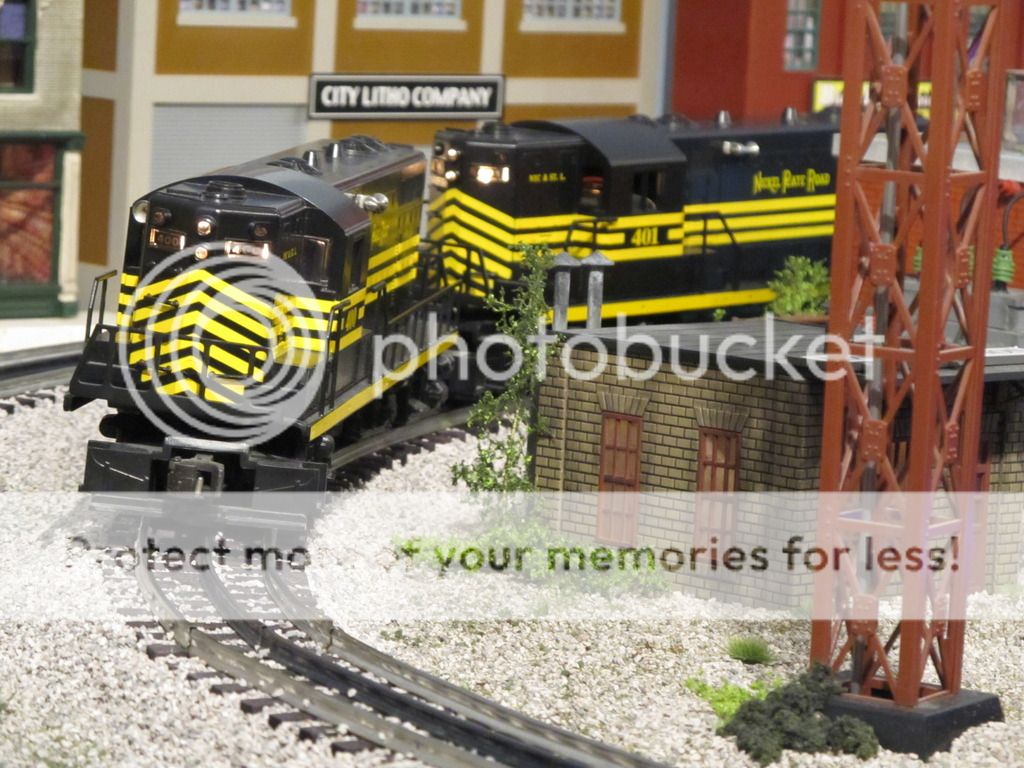Scott, long post here. If you want my recommendation skip to the bottom.
Part of the reason the Pullmor motor may not run smoothly at very low speeds, is that it's a 3-pole motor. The rotating armature has 3 coils set 120 degrees apart. So at very slow speeds you may see / hear it going "whump whump whump" as each coil passes through the magnetic field. By comparison, the Mabuchi can motors in Williams, MTH, etc. have FIVE poles, so there's less of a cogging effect and more power pulses for every inch the locomotive travels. You could even say that these "two-can" locos have four times as many more power pulses per inch traveled, because there are two motors in the loco. I'll explain below why this doesn't help as much as you might think. In the meantime, the Lionel geep has a couple advantages of its own...
The Pullmor motor's armature is physically larger than the tiny can motors in the Williams and MTH. By virtue of its larger size, I would guess that it has higher initial torque. This is important when initiating movement from zero RPM. The Pullmor is a series-wound universal motor, and this design has favorable torque and current characteristics for starting heavy loads.
You didn't say what diameter your curves are. But if your layout is 8x8, I'm guessing they're pretty tight. Since the Lionel has Magne-Traction instead of rubber tires, its wheels are free to skid a little, so it can smoothly negotiate transitions from straght to curves. The MTH and Williams locos with rubber tires on opposite sides of the same axle slow unrealistically as they experience a sudden increase in friction when entering a curve. You can see this on an ammeter, especially when the loco is running "light" (i.e., solo without a train.)
Now for the best part... The NKP set includes a powered unit and a dummy. If your mainline is long enough to merit double-heading, I strongly suggest that you buy another powered GP of similar vintage, and put that powered chassis under the NKP dummy's hood. Now you have two motors just like the MTH and Williams (although yours are in two different units.) You still have only six pulses per rotation compared to their ten. BUT- Your motors are bigger and make more torque. Best of all, the triple-threaded worm gears on your Lionels are back-drivable. That means the wheels can turn the motor. It also means your two motors can help each other, so you're getting the full benefit of both motors. If one motor is about to stall between poles, the motor in the other loco can give it a "push" until it catches and vice-versa. When you crack the throttle with a long train, your NKP geeps will walk out at one... two... three mph. Realistic and very fun!
Meanwhile, the two can motored "China Drives " from MTH and Williams have self-locking gears -- and a lot of friction. Until those tiny motors reach about 600 RPM, they are reluctant to turn. The gears are self-locking, one motor cannot push the other. So if one motor stalls, the loco isn't going anywhere! Instead of getting consistent acceleration from a dead stop, you'll see each truck start to move at a different time. Perhaps a little "chuggle" or bucking until the torque in each motor exceeds its threshold of static friction, and then the loco will suddenly accelerate to four or five mph. Not train-like at all, IMO.
To sum up: I warrant that two POWERED GP9s in consist will give more realistic initial acceleration with a heavy train, and; more consistent operation when going from tangent track into sharp curves running light; than would a Williams or MTH PS1 diesel with two can motors. If you're willing to buy a second powered unit and MU them, my experience suggests that the Lionel geeps will be more gratifying to run.
As others have suggested, using some kind of "chopped wave" AC power, from a Z-1000 transformer, K-Line transformer, ZW-L or the AC Commander will help wring even more slow-speed performance out of a pullmor motor. Note that chopped-wave power will also make them noisy (and they are already noisier than the can motors.) Good luck, whatever you decide!




